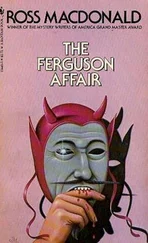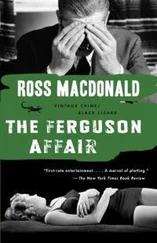VI
Ball games, bicycles, girlfriends, and summer vacations at Granddad’s house; 76at first glance, Heinz Kissinger’s childhood was not much different from what he might have experienced growing up in the United States. And yet the bright and rebellious boy can scarcely have been oblivious to the dramatic changes going on around him as Germany lurched from depression to dictatorship — especially as the principal scapegoat for the country’s misfortunes was the religious minority to which he belonged.
Why was it that the assimilation of the German Jews, which appeared to have been so successful prior to 1914, was so dramatically reversed thereafter, culminating in their near annihilation? There are few more difficult questions in history. One argument — which was Jakob Wassermann’s — is that assimilation was never complete and that there always remained a strain of exceptionally aggressive anti-Semitism in German culture. Another is that we should understand the surge of support for anti-Semitic policies as a backlash against assimilation, precipitated in large measure by economic crisis. It is surely no coincidence that the high points of electoral support for anti-Semitic parties came immediately after the hyperinflation of 1922–23 and the depression of 1929–32. Jews were in relative terms the most successful ethnic group in Germany: they were less than 1 percent of the population but had significantly more than 1 percent of the wealth. Moreover, territorial and political changes to the east of Germany led to an influx of so-called Ostjuden, who attracted public disapprobation precisely because they were not assimilated. 77The virulently anti-Semitic magazine Der Stürmer began weekly publication in Nuremberg in April 1923, the month before Heinz Kissinger’s birth. The front-page masthead for each issue read simply “The Jews Are Our Misfortune.” Even before the Nazis came to power, steps were already being taken in Bavaria to restrict the rights of Jews, notably the 1929 vote by the Bavarian Landtag to ban ritual slaughter by Jewish butchers. 78
To some extent, the Jews of Fürth could comfort themselves that their gentile neighbors were ideologically hostile to National Socialism. When the various far-right organizations held a special “German Day” in Nuremberg on September 1–2, 1923, those attending were given short shrift if they passed through Fürth, where people wearing swastika insignia found themselves being asked to remove them or risk having them torn off. As they arrived at Fürth railway station, one group of brownshirts from Munich were assailed by a hundred-strong crowd chanting “Down with Reaction!” “Kill them!” and “Down with Hitler!” When the SA (Sturmabteilung) men started to sing the Erhardtlied, an early Nazi favorite, the crowd retorted with the Internationale and shouts of “Heil Moskau!” 79When a branch of the National Socialist German Workers’ Party (NSDAP) was established in Fürth shortly after the “German Day,” only 170 people joined. 80And when the party tried to hold a meeting in Fürth on February 3, 1924, the event ended in chaos when the speaker was forced to flee by Communist hecklers. True, the far-right Völkische Bloc did well in the May 1924 national elections, winning over 25 percent of the Fürth vote, compared with just 6.5 percent at the national level. But it did much less well when elections were held again seven months later, slumping to just 8 percent of votes cast. As in Germany as a whole, it was splinter parties like the Economic Party that flourished in the relatively stable economic conditions of the mid-1920s. When the Nazis held a rally in Fürth in September 1925, they fielded a star-studded cast of speakers, including Hitler himself and Julius Streicher, the editor of Der Stürmer . They hoped to fill the Geismann Hall, one of the town’s biggest venues, but less than a third of the expected fifteen thousand people turned up. The local party leader Albert Forster — later the gauleiter of Danzig — ruefully welcomed Hitler to the “citadel of the Jews” ( Hochburg der Juden ). Hitler responded with a speech lamenting the fact that Germans had become “slaves of Jewry” ( “Sklaven… für das Judentum” ). 81Nazi Party membership in Fürth was down to 200 by 1927. Visits by Hitler in March 1928 and Streicher a year later did nothing to stop the rot. The party’s share of the local vote sank to just 6.6 percent in the elections of May 1928.
In Fürth, as in the rest of Germany, it was the Depression that saved Hitler’s movement. The entire period from 1914 to 1933 was an economic disaster for Fürth because the town’s economy was so heavily reliant on exports. Even in the period of relative prosperity between 1924 and 1928, unemployment remained very high — above 6,000 at the beginning of 1927, though things improved in the course of the year as the prospects of the brewing and building industries seemed to brighten. But then conditions began to deteriorate again. At the end of June 1929 there were 3,286 workers receiving one of three forms of welfare available to the unemployed. By February 1930 that number had soared above 8,000. By the end of January 1932 it reached a peak of 14,558. In effect, half of all the workers in Fürth were out of a job. Employment in the once buoyant mirror industry had slumped from around 5,000 to just 1,000. Toy exports had collapsed. 82It was not only workers who were affected but small businessmen, too. By October 1932, 185 formerly independent craftsmen were reliant on public welfare. But welfare payments were so modest that many people were reduced to begging and to petty crime. 83
The causes of the Great Depression continue to be hotly debated. Certainly, a large part of the explanation lies in the policy errors made in the United States during the period. The Federal Reserve first allowed a stock market bubble to inflate by keeping monetary conditions too loose, then allowed the banking system to implode by keeping monetary conditions too tight. Congress increased already high protectionist tariffs. Not until 1933 did the federal government respond to the crisis with anything resembling fiscal stimulus. There was also a complete breakdown in international policy coordination. The large public debts incurred during and after the First World War might have been rationally restructured; instead there were moratoriums and defaults after austerity policies had failed. The Germans made matters worse for themselves by creating a welfare state they could not afford, allowing the trade unions to drive real wages up, and tolerating anticompetitive practices in their industries. But forces were at work beyond the influence of any policy maker. Despite the war, there was an oversupply of young men. Because of the war, there was overcapacity in agriculture, iron, and steel and shipbuilding.
None of this was remotely intelligible to the unemployed and impoverished people living in a provincial Franconian industrial town. The challenge is to explain why, of all the explanations offered to them for the crisis, Adolf Hitler’s was the one they ended up embracing. The big breakthrough for the Nazis came in the Reichstag election of September 14, 1930, which saw their share of the national vote rise from 2.6 to 18.3 percent. In Fürth they won 23.6 percent of votes cast, up fourfold from 1928. This was the beginning of a sustained ascent. Hitler won 34 percent of the Fürth vote in the first round of the 1932 presidential election. In the Bavarian Landtag elections, the Nazis’ share of the vote rose to 37.7, exceeding the Social Democrats’ for the first time. In the Reichstag election of July 31, 1932, the Nazis won 38.7 percent of the vote. They lost ground in the election of November 6, 1932, but then surged to 44.8 percent of the Fürth vote in the election of March 5, 1933. In that election, more than 22,000 Fürthers voted Nazi (see table).
Читать дальше











